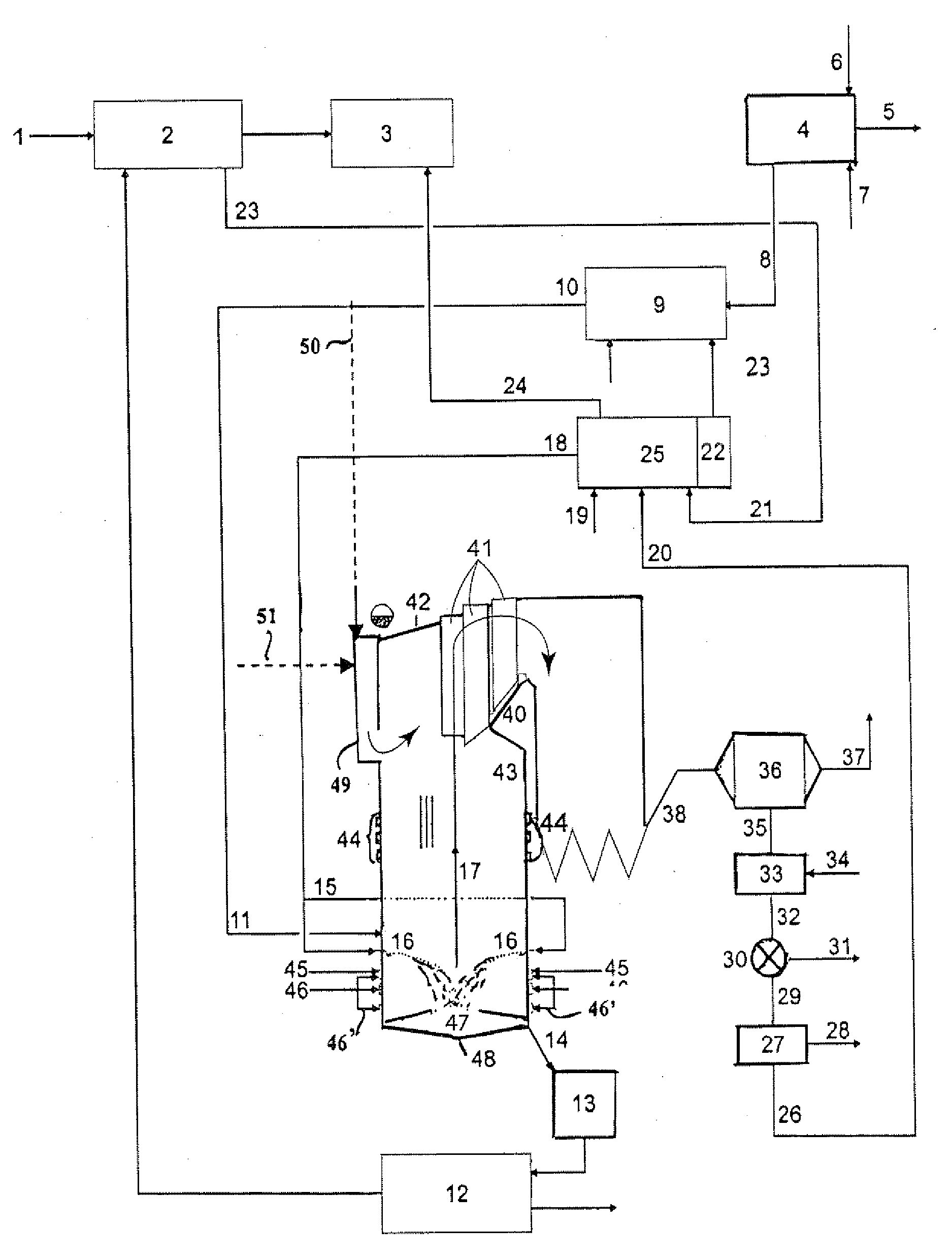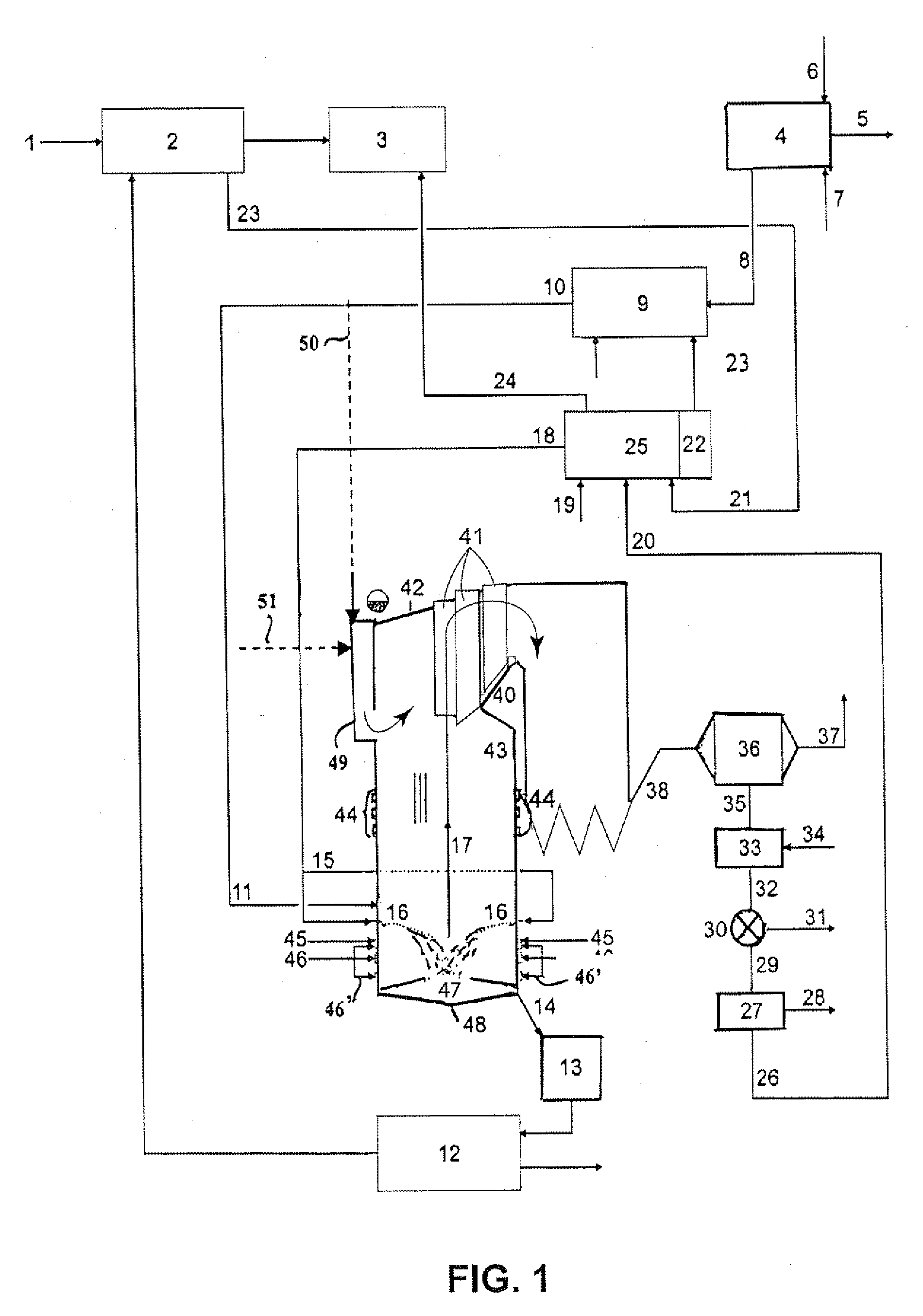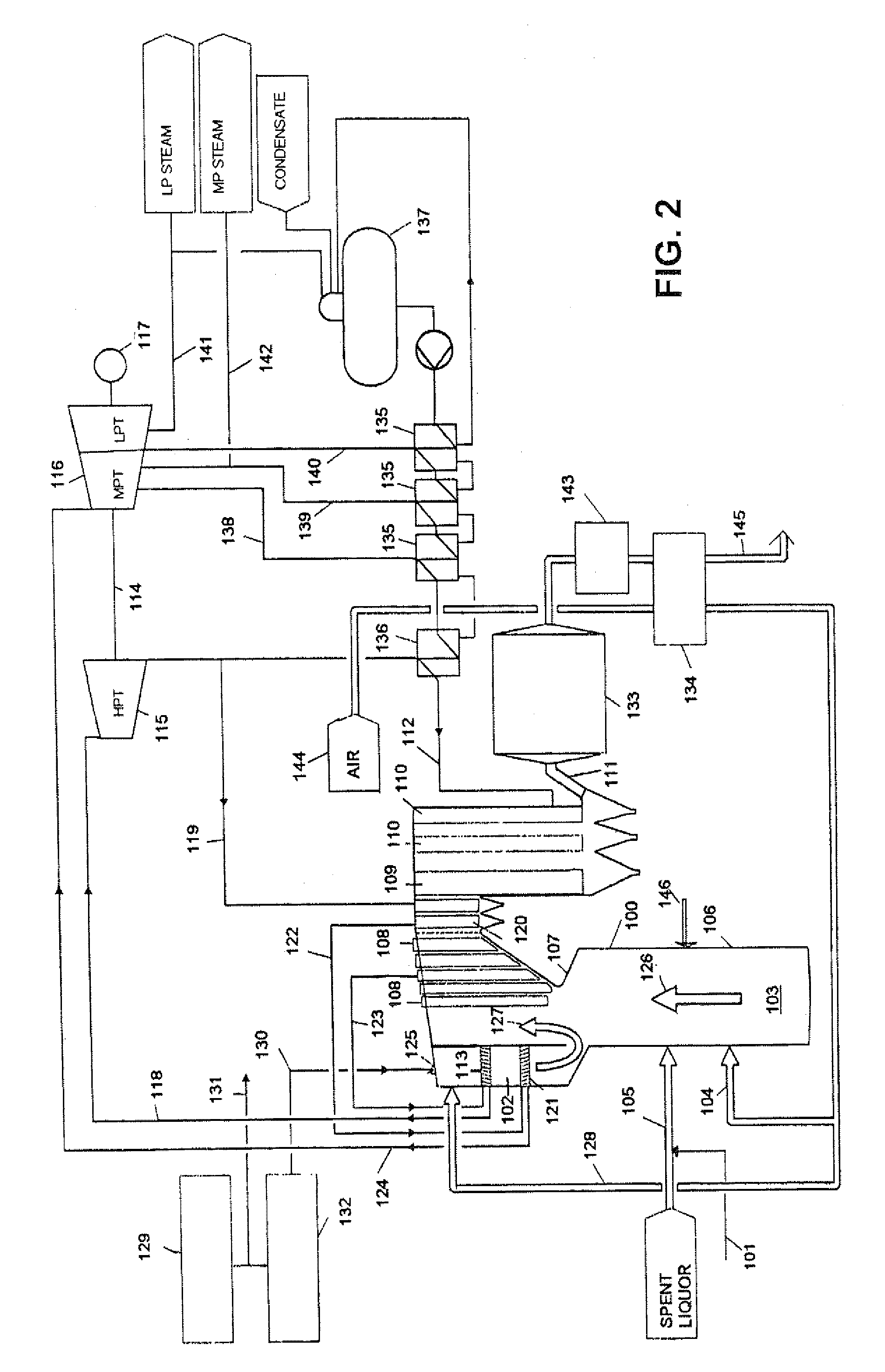Recovery process and system for a pulp mill
a recovery process and pulp mill technology, applied in the field of recovery processes, can solve the problems of increasing chemical consumption, increasing the amount of organic chlorine compounds from bleaching, and increasing the amount of chemical consumption, so as to improve the burning in the chamber and increase the chlorine delivery
- Summary
- Abstract
- Description
- Claims
- Application Information
AI Technical Summary
Benefits of technology
Problems solved by technology
Method used
Image
Examples
Embodiment Construction
[0039]The exemplary system illustrated in FIG. 1 includes a cooking plant 2 which typically comprises a digester, such as a continuous digester, to which hard wood or soft wood chips, or other comminuted cellulosic material, is fed through line 1. In the digester the wood chips are acted upon by the cooking chemicals at temperature and pressure conditions so as to produce chemical cellulose pulp, such as kraft pulp. The pulp is further typically treated in brown stock washing and in a screening room. Then the pulp is preferably subjected to oxygen delignification in stage 3. After oxygen delignification, the pulp proceeds to the bleach plant where it is subjected to bleaching in a plurality of different bleaching stages. The particular bleaching stages that are utilized can be varied, and are also dependent upon the particular cellulose material being treated, but in at least one bleaching stage chlorine dioxide is used as a bleaching chemical. Typical sequences are A / D-EOP-D-P and ...
PUM
| Property | Measurement | Unit |
|---|---|---|
| temperature | aaaaa | aaaaa |
| temperature | aaaaa | aaaaa |
| temperature | aaaaa | aaaaa |
Abstract
Description
Claims
Application Information
 Login to View More
Login to View More - R&D
- Intellectual Property
- Life Sciences
- Materials
- Tech Scout
- Unparalleled Data Quality
- Higher Quality Content
- 60% Fewer Hallucinations
Browse by: Latest US Patents, China's latest patents, Technical Efficacy Thesaurus, Application Domain, Technology Topic, Popular Technical Reports.
© 2025 PatSnap. All rights reserved.Legal|Privacy policy|Modern Slavery Act Transparency Statement|Sitemap|About US| Contact US: help@patsnap.com



